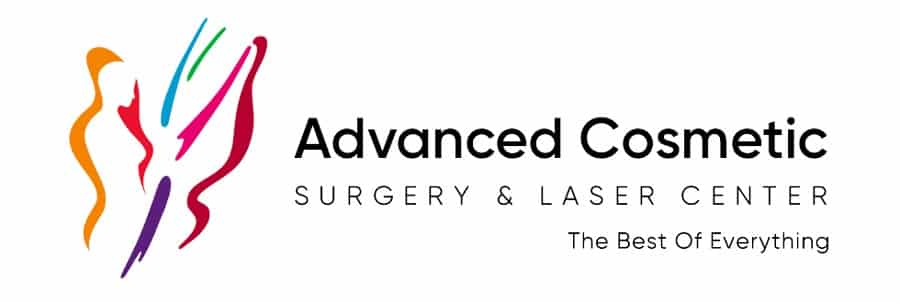Dr. Mendelsohn discusses Rhinoplasty in Cincinnati
So there are various reasons why someone would want to undergo Rhinoplasty and when we use the term Rhinoplasty we’re generally talking about an esthetic result, that is we’re talking about reshaping the nose. Sometimes patients come in for functional reasons, that is they can’t breathe, their septum might be deviated and in fact if we’re addressing that deviated septum it may have an improvement on the overall appearance of the nose and we might call it a septa Rhinoplasty. So sometimes if people have breathing problems we’re addressing both issues, if the people don’t have breathing problems we use the term Rhinoplasty. One of the basic things we need to take at look at with Rhinoplasty are the overall facial analysis. When we look at a face, we look at a face from the hairline to the brow, the brow to the base of the nose, that should represent about one third of the face in height and in projection, so in other words, patients sometimes come in and say hey doc, I need a nose job. Their nose is perfectly fine, but what they have is a very weak chin so it’s our responsibility during the consultation to review these very carefully using photographs, so we understand where we are starting and what the goals are.
A Rhinoplasty procedure basically consists of an operation, typically taking anywhere from sixty to ninety minutes and it’s generally performed under IV sedation, that is you come in, we start an IV and we give you medication so you’re completely unaware of what’s going on, there’s no need to intubate you, there’s no breathing tube and you’re not paralyzed but you’re unaware of what’s going on. What we’ll typically do then is we’ll localize the area, we’ll numb the area up, and we’ll place some very small incisions inside of each nostril and most of the Rhinoplastys we perform are performed via an open approach and all that means is there’s a little tiny incision along the area we call the carmela right here, it heals beautifully, but it gives me exposure to the cartilage and the bony aspects of the nose, depending upon what we’re trying to reshape, , if we’re reshaping a tiny bump on the nose, we might use a little instrument much like a nail file, it’s called a rasp, most of the work is very detailed oriented and addresses the cartilage in the tip so we don’t have a bulbous tip or a y tip, we can refine the tip.
There are some descriptions that we use during the consultation that are important to understand. One of the terms is called projection, if I’m Pinocchio and I’m over projected, we want to de-project that tip. Asian and African American nose we call more platyrrhine or flat and in that instance, many times we’re trying to re-project the tip. Rotation is another term that is important. This area between the nose and the lip is what we call the nasal labial angle and the nasal labial angle in women, we typically like to see about a hundred, a hundred and ten degrees and in men we want it a little more acute, maybe ninety five to a hundred degrees. When we look at projection, if we look at the base of the nose and we look at the distance between the base and the tip of the nose, and the base and the upper lip that should be about a one to one ratio, ideally that’s what we like to see in terms of projection.
Many patients ask about their nostrils and there’s a quick thing you can do to asses if you’re nostrils are too wide and that is, if we look where our eyelids attach, we call this the medial canthus, and we drop a vertical line down around that area. In a Caucasian, we like to see the nostril fall roughly along those lines, again, the more platyrrhine nose, the flatter nose, an Asian or African American nose, many times the base will be a little bit wider and there are some simple maneuvers we can perform if in fact we want to narrow the nostrils. One of the biggest things we like to communicate with patients is what is going to happen after the procedure. I have not packed a nose since 1997, if you jump online and start reading things, or if you ask patients who have undergone Rhinoplasty, probably the only thing they will remember is how awful it was with the packing in their nose. I’m about six feet tall, we used to place six feet of packing in each side of the nostril, you‘d come back several days later and we’d start pulling it out. You would pass out, it’s gross, there’s mucus, there’s blood, there’s bleeding, we do not use nasal packing, you do not need to use nasal packing.
Most patients do quite well, there’s a little bit of skin colored tape over the dorsum, the bridge of the nose, typically about five days or so, most people breathe better after word if we’re addressing some functional or breathing issue and patients may take a half of a Vicodine or Tylenol that night, generally speaking though there’s not much pain or discomfort associated with Rhinoplasty. Following Rhinoplasty, we might recommend that you don’t smile a whole lot, your nose is going to feel a little bit stiff in this area, we don’t want you eating any hot temperature or hot spicy food wise because we want to diminish the blood flow to that area to reduce the risk of any bleeding. When the tape is taken off, typically the fifth or sixth day, you’ll see the results immediately. There’s certain results that will take up to a year to see and that’s when we’re doing a lot of tip work. Patients who have particularly moderate or thicker skin, it takes a bit longer to see some of the results, these changes continue to occur slowly over time but they do continue to occur.
One of the biggest questions we get with Rhinoplasty is do we need to break the nose and let me start off by saying regardless of what we do from a Rhinoplasty standpoint, the recovery and overall process is about the same for your experience. Let’s say for example you have a big bump on your nose and one of our jobs is to reduce that, you don’t want that big hump, let me explain what happens when somebody comes in and has a bump on their nose. That bump on the nose is up in this area, and let’s pretend that’s at the peak of this triangle. If we remove that bump, we’re converting roughly a triangular shape into something that’s more now trapezoidal. If we left the nose alone there, you would develop what we call an open roof deformity, it would look flat like you walked right in to a wall. So our job then is to make a little cut in the bone, the austiotomy where we simply drop the side walls back where we can reconstitute the natural triangular shape in the nose. When we break a nose, all we’re doing is making a small cut in the nose. With regards to overall recovery, there isn’t any more time involved, it’s still about a five to six day process before we take the tape off.

